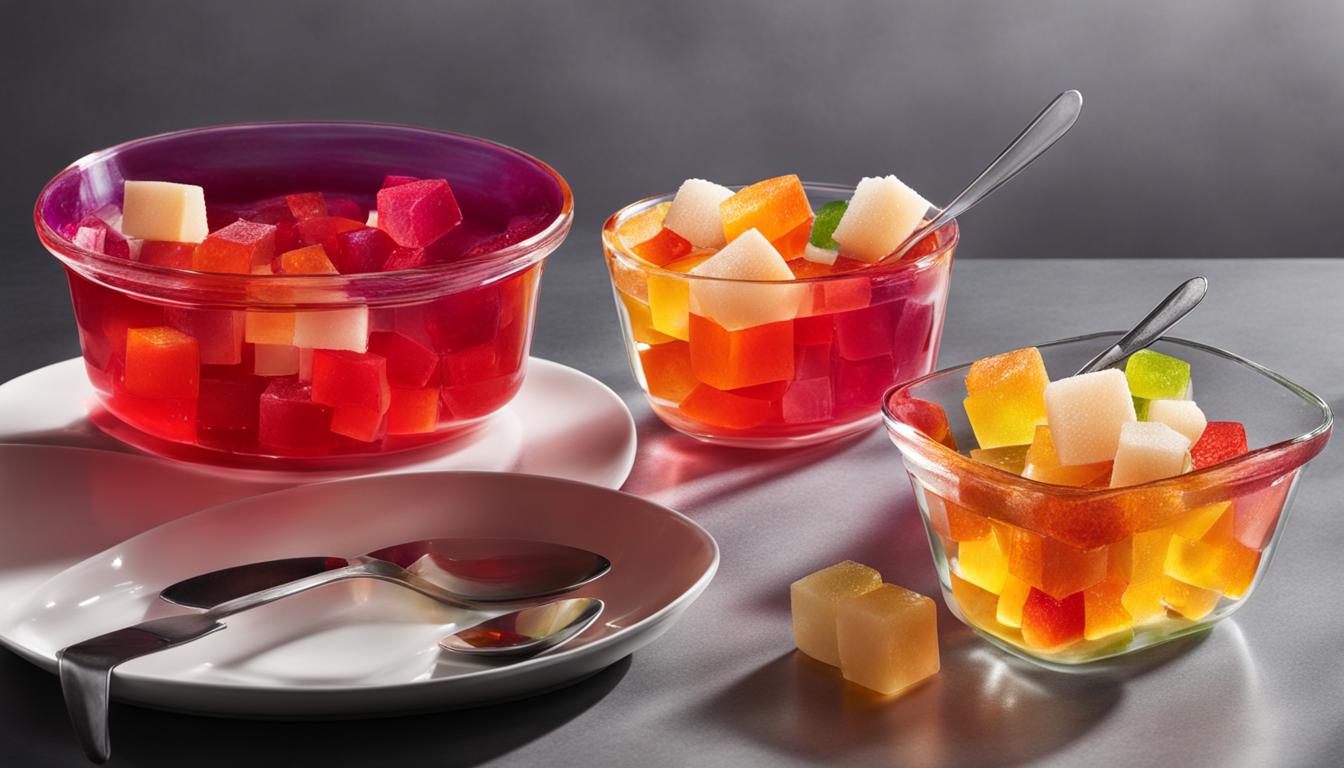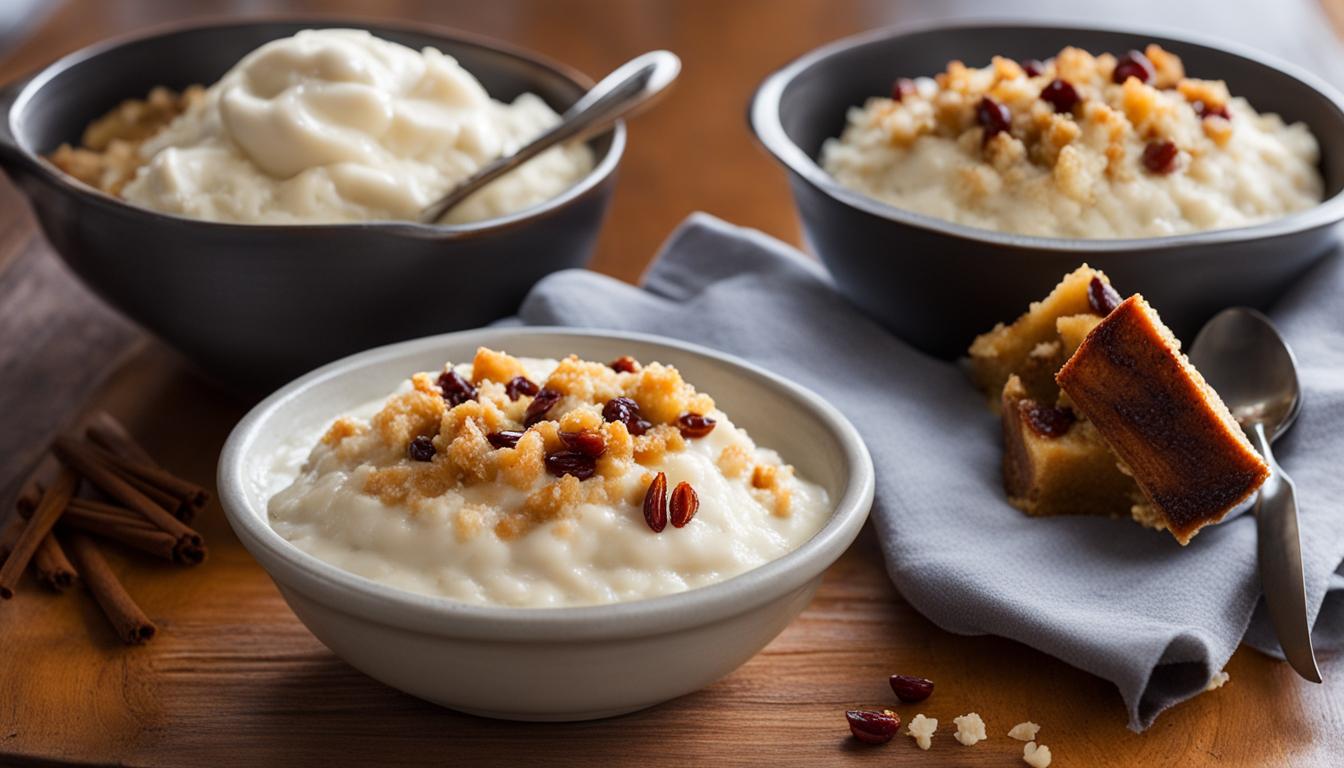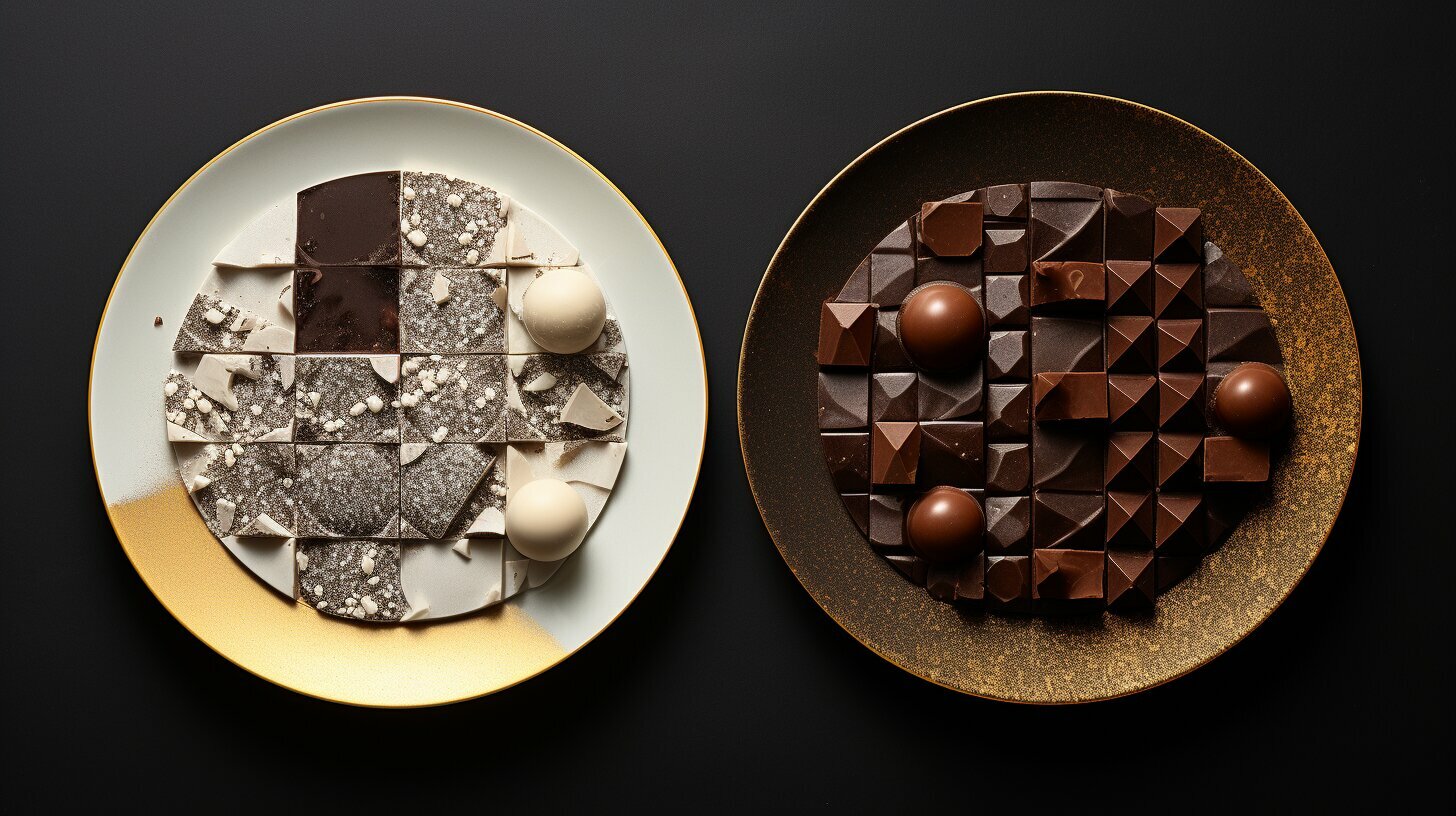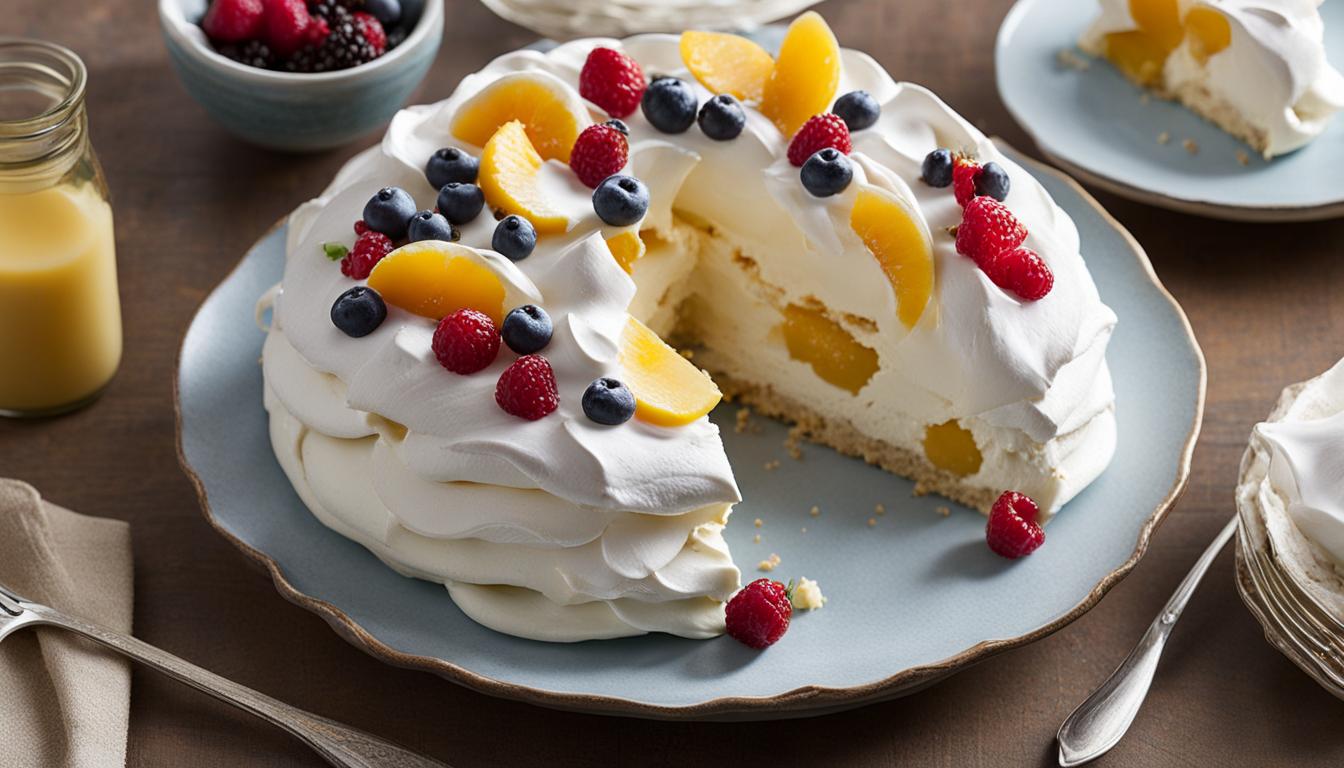Jelly and Jello are similar but not the same. Jelly is a preserve made of fruit juice, sugar, and pectin. It has a smooth and elastic texture. Jello, on the other hand, is a gelatin-based dessert made with water, sugar, gelatin, and food colors. Jello is a brand name used in the US to refer to flavored gelatin. While all Jello is jelly, not all jelly is Jello.
Key Takeaways:
- Jelly is a preserve made of fruit juice, sugar, and pectin.
- Jello is a gelatin-based dessert made with water, sugar, gelatin, and food colors.
- Jelly has a smooth and elastic texture, while Jello has a gelatinous and wobbly texture.
- Jello is a brand name used in the US to refer to flavored gelatin.
- While all Jello is jelly, not all jelly is Jello.
Characteristics of Jelly
Jelly is a versatile and delicious fruit-based preserve that offers a unique set of characteristics. Here are some key attributes of jelly:
Smooth Texture
Jelly is known for its smooth and elastic texture. When prepared correctly, it has a pleasing consistency that is easy to spread and enjoy. This characteristic makes it an excellent choice for using as a topping on toast, and as a filling in cakes and pastries. The smoothness of jelly enhances the overall eating experience, providing a delightful sensation in every bite.
Soft and Elasticity
The elasticity of jelly is one of its defining features. The protein fibers in gelatin, the main ingredient in jelly, give it a unique shape and consistency. When properly set, jelly can be easily molded and holds its form well. This characteristic makes jelly an ideal choice for creating intricate dessert presentations or adding visual interest to your culinary creations.
Delicious Flavors and Uses
Jelly is available in a wide range of fruit flavors, allowing for endless taste possibilities. It can be made from various fruit juices and is typically combined with sugar and pectin to create the desired consistency. Besides being used as a spread or filling, jelly can be incorporated into sauces, glazes, or marinades to add a hint of sweetness and tang. Its versatility extends beyond traditional uses, making it a popular ingredient in both sweet and savory dishes.
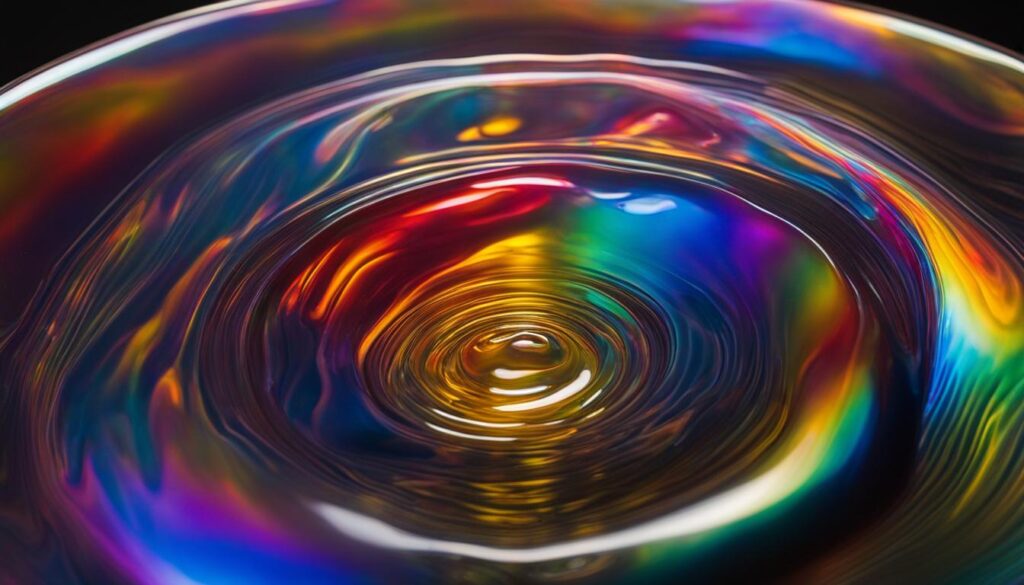
Table: Jelly vs. Jello – A Quick Comparison
| Characteristic | Jelly | Jello |
|---|---|---|
| Primary Ingredients | Fruit juice, sugar, pectin | Gelatin, sugar, artificial flavors |
| Texture | Smooth and elastic | Gelatinous and wobbly |
| Flavors | Primarily fruit-flavored | Wide range of artificial flavors |
| Uses | Spreads, fillings, cake and pastry ingredient | Stand-alone dessert, ingredient in other desserts |
Table: Jelly vs. Jello – A Quick Comparison
While jelly and Jello share similarities in their characteristics and uses, there are distinct differences between the two. Understanding these differences allows for a better appreciation of their unique qualities and opens up a world of culinary possibilities.
Characteristics of Jello
Jello, also known as flavored gelatin, is a popular gelatin-based dessert that is loved by people of all ages. It is known for its smooth and wobbly texture, which is a result of the gelatin protein fibers. Jello is made by combining water, sugar, gelatin, and food colors, giving it its vibrant appearance. The gelatin in Jello sets when cooled, creating a jiggly consistency that is pleasing to both the eye and the palate.
Jello comes in a variety of flavors and colors, making it a versatile dessert option. It can be enjoyed on its own as a sweet treat or used as a creative ingredient in a wide range of recipes. From colorful fruit salads to fun and whimsical molded shapes, Jello offers endless possibilities in the kitchen. Its playful nature makes it a hit at parties and gatherings, where it can be served in individual cups or used as a centerpiece in decorative molds.
Key Distinctions Between Jello and Jelly
While Jello and jelly are both gelatin-based, there are key distinctions that set them apart. Unlike jelly, which is made from fruit juice, sugar, and pectin, Jello contains artificial flavors and colors that give it its unique taste and appearance. Jelly has a clear and elastic consistency, while Jello has a more gelatinous and wobbly texture. Furthermore, Jello is often associated with the brand name and is commonly referred to as such in the United States, whereas jelly is a more generic term used to describe fruit preserves.
| Jello | Jelly |
|---|---|
| Flavored gelatin dessert | Fruit preserve made with fruit juice, sugar, and pectin |
| Smooth and wobbly texture | Clear and elastic consistency |
| Artificial flavors and colors | Fruit-flavored |
| Versatile dessert option | Spread, topping, or filling |
Differences Between Jello and Jelly
Jelly and Jello may seem similar, but they are distinct in terms of ingredients, preparation, texture, and flavor. Understanding the differences between these two popular food items can help you make informed choices in your culinary adventures. Let’s delve into the contrasts between Jello and jelly:
Ingredients and Preparation:
Jelly is made by combining fruit juice, sugar, and pectin. The fruit juice provides the flavor, while the pectin acts as a thickening agent. On the other hand, Jello is made using gelatin, sugar, artificial flavors, and water. Gelatin is derived from animal collagen and gives Jello its characteristic firm texture when set. While jelly relies on natural fruit flavors, Jello offers a wide range of artificial flavors to choose from.
Texture and Appearance:
The texture of jelly is clear, smooth, and elastic. It retains its shape when spread, making it a perfect accompaniment for toast or a filling in pastries. Jello, on the contrary, has a gelatinous and wobbly texture that delights both children and adults. Its vibrant colors and fun molds make it visually appealing and a popular choice for desserts and parties.
Flavor and Nutritional Differences:
While both Jello and jelly can be flavored, jelly primarily offers fruit flavors due to its natural fruit juice base. On the other hand, Jello’s artificial flavors give it a wider range of options, including fruit, dessert, and even savory flavors. Nutritionally, Jello and jelly can vary depending on the specific ingredients used. However, both are relatively low in calories and fat, making them enjoyable treats without excessive guilt.
| Jelly | Jello | |
|---|---|---|
| Ingredients | Fruit juice, sugar, pectin | Gelatin, sugar, artificial flavors |
| Texture | Clear, smooth, elastic | Gelatinous, wobbly |
| Flavors | Fruit flavors | Wide range, including fruit, dessert, and savory flavors |
| Nutritional Information | Varies based on specific ingredients. Generally low in calories and fat. | Varies based on specific ingredients. Generally low in calories and fat. |
Both Jello and jelly have their own unique qualities and can be enjoyed in various recipes and settings. Understanding their differences allows you to appreciate their individual characteristics and choose the right one for your specific needs. Whether you prefer the smooth and elastic nature of jelly or the wobbly delight of Jello, these delightful treats are sure to add a touch of sweetness to your culinary repertoire.
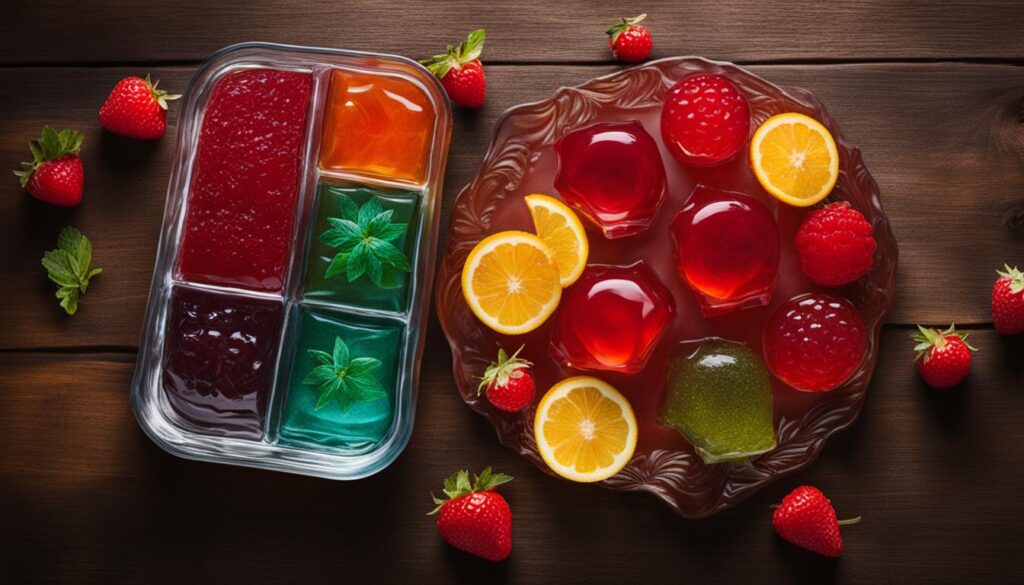
Conclusion
In conclusion, there are both similarities and differences between Jello and jelly. While Jello is a type of jelly, it is important to note that not all jelly can be called Jello. Jelly is made from fruit juice, sugar, and pectin, giving it a smooth and elastic texture. On the other hand, Jello is a gelatin-based dessert made with water, sugar, gelatin, and artificial flavors, resulting in a wobbly consistency.
Both Jello and jelly have their own unique characteristics and uses. Jelly is often used as a spread on toast, a topping for desserts, or a filling in cakes and pastries. Jello, on the other hand, can be enjoyed on its own or used as an ingredient in various desserts. Its versatility allows it to be molded into different shapes.
While Jello and jelly share similarities in their uses and characteristics, they do have distinct differences in terms of ingredients and preparation. Jello is flavored and comes in a wide range of colors, while jelly is primarily fruit-flavored. Nutritionally, both Jello and jelly are relatively low in calories and fat. Understanding these differences will help you achieve the desired outcome when using Jello or jelly in your culinary creations.
FAQ
What is the difference between Jello and Jelly?
Jello is a gelatin-based dessert made with water, sugar, gelatin, and food colors, while jelly is a soft, fruit-flavored preserve made primarily of fruit juice, sugar, and pectin.
What are the characteristics of jelly?
Jelly has a smooth texture and is known for its elasticity. It is often used as a spread on toast, a topping for desserts, or a filling in cakes and pastries.
What are the characteristics of Jello?
Jello has a smooth and wobbly texture and comes in various flavors and colors. It can be served on its own or used as an ingredient in other desserts.
What are the main differences between Jello and Jelly?
Jelly is made with fruit juice, sugar, and pectin, while Jello is made with gelatin, sugar, and artificial flavors. Jelly has a clear and elastic consistency, while Jello has a gelatinous and wobbly texture.
Are there nutritional differences between Jello and Jelly?
The nutritional content of Jello and jelly may vary depending on the specific ingredients used, but both are relatively low in calories and fat.
 Skip to main content
Skip to main content